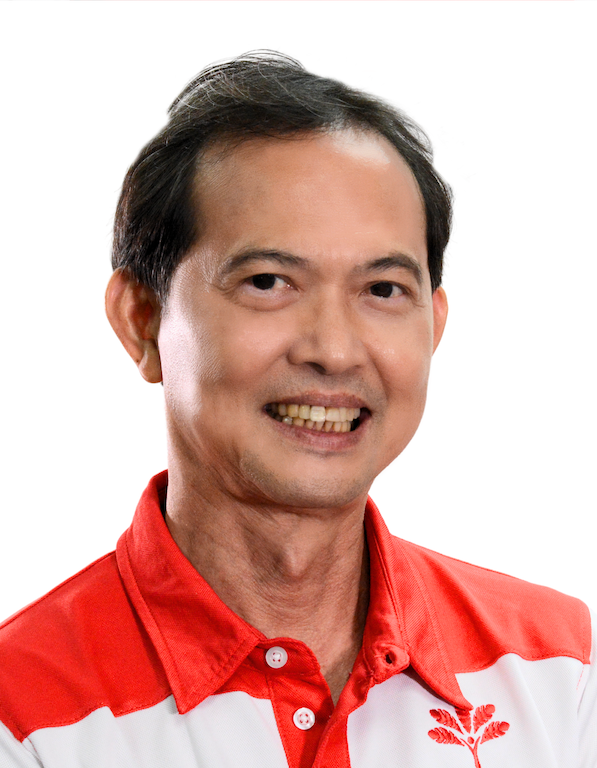Mr Speaker Sir,
One of the main objectives of the bill being debated today is to amend the CPF Act 1953 to limit CPF schemes primarily to Singapore Citizens and PRs. This is the culmination of changes to CPF that began almost 30 years ago.
Prior to August 1995[1], some categories of foreign workers, most notably Employment Pass (EP) holders, had to make CPF contributions in line with the prevailing rates for Singaporeans and PRs. Similarly, their employers also had to make CPF contributions for these foreign workers.
However, after 1 August 1995, all foreigners were exempted from CPF contributions.
At the time, the Ministry of Labour, which is now the Ministry of Manpower, stated that the only reason for the change was to streamline the CPF rule for all foreign workers.
But even in 1995, there was already concern that exempting foreign workers, especially EP holders, from CPF contributions would have negative impacts on Singaporean workers, especially the middle-ranking PMETs, because employers would benefit from lower wage costs when they employ new foreign staff.
An article in The Straits Times on 15 July 1995[2], noted that Singaporean workers would become less competitive against foreigners if employers do not make up for all, or some, of the CPF foregone by the foreign worker, especially if the foreigner was here on local terms. Even the then-Menteri Besar of Johor, Mr Abdul Ghani Othman, expressed his concern[3] that the rule change would make Singapore a more attractive place to work for Malaysians, especially those from Johor.
Were these concerns without basis? We can now examine this with the benefit of the experience of the last thirty years.
Since the rule change in 1995, the number of EP holders in Singapore has increased substantially.
In the mid-1990s, there were only 50,000 EP holders in Singapore, accounting for less than 3% of the labour force at the time. Today, as of June 2023, there are almost 200,000 EP holders in Singapore, accounting for close to 6% of the labour force.
I am not suggesting that the exemption of EP holders from CPF contributions has been the only reason driving the increase in the number and proportion of EP holders among the workforce in Singapore. But there is no doubt that this policy does make our local professionals less competitive against foreign professionals.
A company can hire a foreign professional holding an EP at a monthly salary of $5,000, same as Singaporeans. But the employer would have to pay an extra $850 in CPF contributions for the Singaporean worker. The Singaporean’s wage bill for the employer is $5,850 but the Singaporean only gets to take home $4,000. As for the EP holder, the employer’s wage bill is only $5,000 and the EP holder gets to take home the whole $5,000. It is a win-win situation for both the employer and the EP.
It should be no wonder that employers in Singapore have become more reliant on EP holders since the rules were changed almost 30 years ago.
The Minister of Manpower has denied that several times in this House in response to my questioning quoting other costs that the employers have to incur.
However, the fact remains that the change of the law in 1995 has given an advantage to employers who employ foreign workers and PMETs.
That advantage became a menace to Singaporean workers after the Government opened up the local job market to foreigners since the early 2000s.
We are not calling for a return to the old days when EP holders had to make CPF contributions in line with Singaporean workers. However, we believe that even until today, not enough has been done to mitigate the negative impacts caused by this policy, which has helped to make Singaporean workers less competitive against foreign workers and depress the wages of Singaporean workers.
What can be done to mitigate these negative impacts? PSP would like to put forth two suggestions.
Firstly, we need to level the playing field for Singaporean workers by imposing a $1,200 monthly levy on all EP holders immediately.
We have made this call in this House before, during the Budget debate in 2021 and 2023. In March, the Minister said that I keep harping on this thing about imposing a levy, but I am going to repeat it again.
This levy will take up a smaller proportion of the high salaries of the true foreign talents and differentiate them from lower-wage foreign professionals who are being used as low-cost labour and depressing the wages of Singaporean professionals. This way, we will be able to get the best, highest quality talent to come to Singapore from anywhere in the world.
Secondly, we need to ensure that Singaporeans earn higher returns on their CPF balances to compensate for the lower wages they earn as a result of the expansion of the foreign PMET intake in the last two decades.
In a written answer to my colleague Hazel Poa’s parliamentary question in September, Minister Tan See Leng revealed that the overall average CPF interest rate, including extra interest, across the different types of CPF accounts and balances from 2018 to 2022 is close to 4% per annum, which means, it is less than 4% per annum.
As CPF balances are long term retirement funds kept with the CPF Board for 30 to 40 years, there is room for the returns on CPF accounts to be higher.
Singaporeans currently have limited options to increase the returns on their CPF savings. They can only leave their money in their accounts and earn the fixed interest rates given by the Government or invest savings above a threshold in the CPF Investment Scheme (CPF-IS).
Although the experience of the CPF-IS which is essentially a self-managed investment account, is not encouraging perhaps due to limited investor knowledge and lack of investment opportunities in the local capital markets, we should allow Singaporeans to put more of their CPF savings with professional managers.
In 2016, the CPF Advisory Board had recommended that a new Lifetime Retirement Investment Scheme[4] (LRIS) which is managed by professionals be introduced. Under this scheme, CPF members would be allowed to invest some of their CPF savings in simple-to-understand, low-fee, well-diversified life cycle investment products.
Such products would be passively managed and carefully selected by the CPF Board. The funds would most likely invest in higher-risk, higher-return assets such as equities when the CPF member is younger and lower-risk, lower-return assets such as bonds when they are closer to retirement age.
Similar funds are offered by the Australian superannuation scheme or 401(k) scheme in America, which some Singaporeans may already be familiar with.
This would be an additional option for most CPF members which may earn higher returns on their investible CPF savings. According to statistics published by the US Department of Labor, 401(k) plans returned about 6-10% per annum[5] when we assess the rate of return over a five-year period.
While the returns each year will be much more volatile than a fixed interest rate from CPF, the CPF member should be able to earn a higher return through the Lifetime Retirement Investment Scheme over 30 or 40 years.
On top of this, the Lifetime Retirement Investment Scheme can help grow our local fund management industry and prevent Singaporeans from being over-invested in property.
The Government had accepted the recommendation to set up the Lifetime Retirement Investment Scheme in 2016. However, it has still not yet been implemented[6]. Why is this the case?
The Government should not continue to stay silent on this issue and set up the Lifetime Retirement Investment Scheme so that Singaporeans have the option to increase the returns on their Ordinary Account and Special Account savings by investing them in low-fee, passively managed investment products.
If the Government is not prepared to allow Singaporeans to do this, then it should increase the interest rates that it pays to CPF members. This is possible because GIC returns more than 4% a year.
The Government should share with Singaporeans more of the differential between what it pays Singaporeans in CPF interest and what it earns from GIC in investment returns.
This will go a long way in improving the retirement adequacy of Singaporeans, whose wages have been depressed by the influx of lower-wage foreign workers over the last few decades.
Mr Speaker, I support the Bill.
For Country For People.
Thank you.
References
- https://eresources.nlb.gov.sg/newspapers/digitised/article/stoverseas19950715-1.2.6.1?qt=cpf,%20contributions,%20foreigners&q=CPF%20contributions%20foreigners
- https://eresources.nlb.gov.sg/newspapers/digitised/article/straitstimes19950715-1.2.50.4?qt=cpf,%20contributions,%20foreigners&q=CPF%20contributions%20foreigners
- https://eresources.nlb.gov.sg/newspapers/digitised/article/newpaper19950712-1.2.32.2?qt=cpf,%20contributions,%20foreigners&q=CPF%20contributions%20foreigners
- https://www.mom.gov.sg/-/media/mom/documents/employment-practices/cpf-advisory-panel/part-2-recommendations/executive-summary.pdf
- https://www.dol.gov/sites/dolgov/files/ebsa/researchers/statistics/retirement-bulletins/private-pension-plan-bulletin-historical-tables-and-graphs.pdf
- https://www.businesstimes.com.sg/wealth/wealth-investing/where-are-we-cpf-lifetime-retirement-investment-scheme

